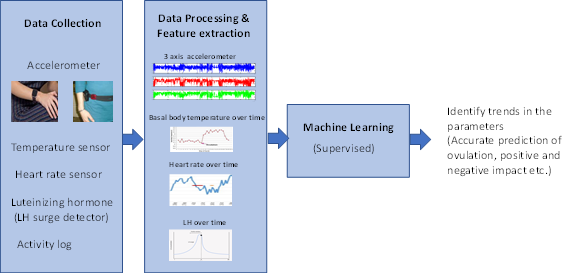With a better understanding of athletes' menstrual cycles needed, researchers in HELS are investigating in order to improve monitoring and aid improved athlete performance.
Researchers
- Dr Meghan Brown
- Dr Viji Ahanathapillai
- Dr Pat James
- Dr Annalise Weckesser
Research background
A large body of evidence reports that hormonal fluctuations experienced during the menstrual cycle are associated with a huge number of health and performance outcomes. These hormonal fluctuations extend from menarche to the menopause in a circamensual rhythm that broadly ranges from 21 days to 35 days.
There is high inter and intra individual variability in the menstrual cycle (even among regularly menstruating individuals), and this is complicated still by hormonal contraceptive use. Moreover, the prevalence of menstrual ill health in sportswomen has been reported to vary between 6-79% (Warren and Perlroth 2001).
It is plausible that changes to the menstrual cycle could be higher still, given evidence that elite Australian athletes have experienced menstrual cycle changes in light of the pandemic (McNamara et al., 2020).
The evidence to date demonstrating the individuality of the menstrual cycle highlights the importance of monitoring the cycle and investigating the associated symptoms (tiredness, cramps, sore back, loss of appetite) and impact (both positive and negative).
This project is funded by the HELS faculty, GRTA (Graduate Research and Teaching Assistants) funding.

Research aims
This interdisciplinary project aims to investigate:
- The current menstrual cycle monitoring/tracking practices of athletes
- The efficacy of different methods including activity monitoring using wearable devices to predict ovulation and menstrual cycle phase in athletes
- The effect of menstrual cycle phase on athletic performance, training routines and/or recovery.
How will the research be carried out?
The basal body temperature, heart rate, Luteinising Hormone (LH) surge, physical activity (using a 3 axis accelerometer) and activity log will be collected and analysed.
Intended outcomes and impact
There is a clear need to improve understanding of the menstrual cycle in athletes. Therefore, it is expected that the impact of this research would be wide reaching.
Certainly, the outcomes of this research will enable athletes, coaches, and future practitioners to better understand menstrual cycle monitoring and the associated performance impacts in athletes.
